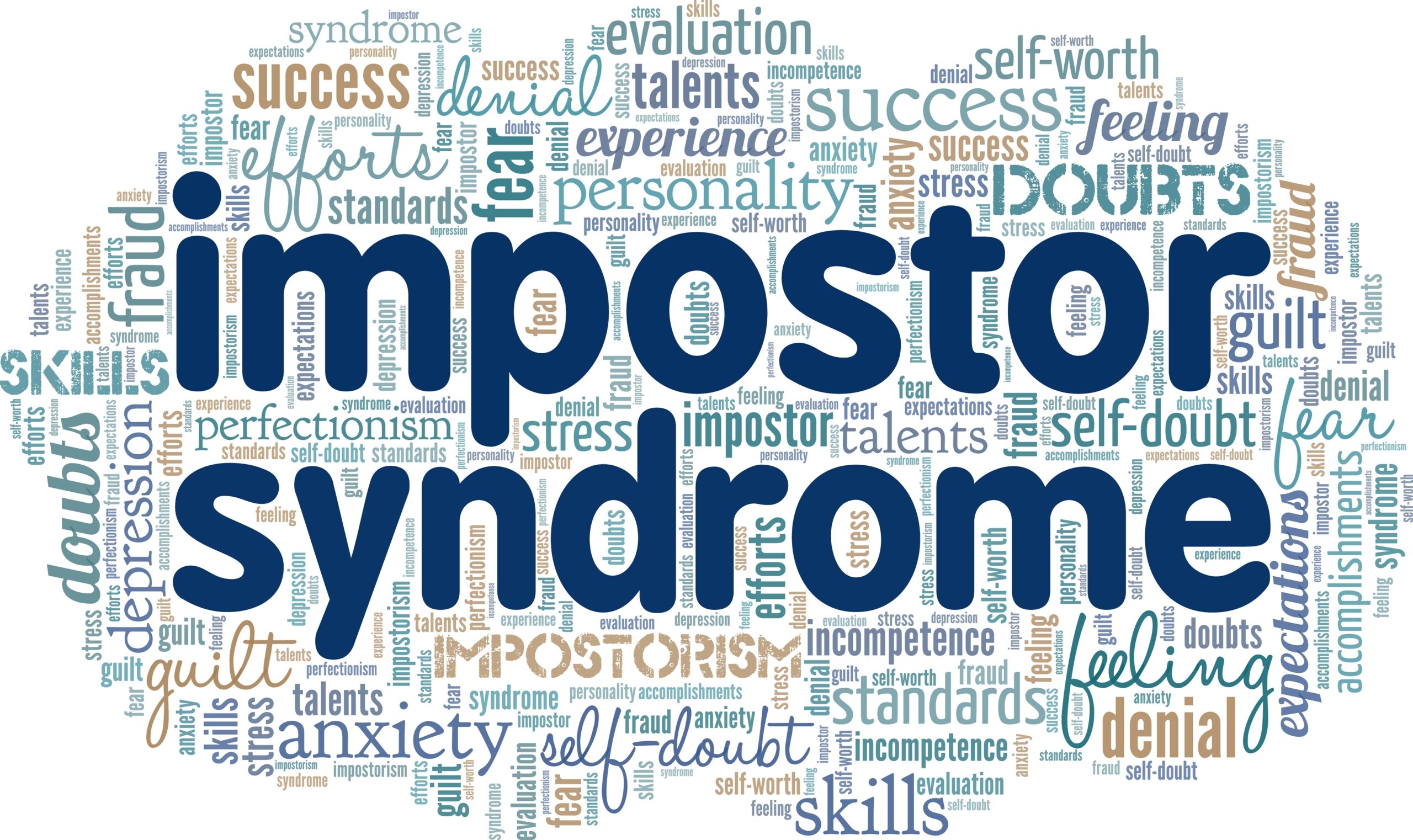


Think back to when you first received critical feedback from a supervisor. Chances are, you had a painful experience. I know I did. It was so painful, I quit my job over it.
I quit my job the day after a critical performance review, but later rescinded it because the organization truly valued my work, and my supervisor was just trying to provide input for further professional development.
I had gone through many years, about 14 in fact, where the only feedback I received on my performance was all positive. This didn’t mean I wasn’t struggling with Imposter Syndrome, because each time I did receive a performance evaluation or a promotion, my “Imposter Monster,” would rear its ugly head.
The “Imposter Monster” is that negative voice inside, trapping you in untrue beliefs. Mine would say things such as “dodged a bullet again” and “they still haven’t figured out you are a phony.” It told me this for years, and I believed it.
It got so bad that the first time I did receive some critique, the Imposter Monster seemed to be validated in saying “There it is! They have finally figured out that you are a fake and not worthy of this job!”
The first time I received critical feedback, it triggered my Imposter Syndrome, and my reaction was to quit. My issues with it went much deeper than that moment. It wasn’t about the critical feedback; it was about my own struggle with Imposter Syndrome.
Let’s start with defining Imposter Syndrome. It is a condition in which an individual believes that they are an “Imposter” – a fake, a phony, not qualified to be taking on certain duties, and not worthy of certain awards and accomplishments.
There are constant fears for many with Imposter Syndrome – fear of failure, fear of exposure of weaknesses, fear of criticism, fear of rejection. The constant fears and negative mindset can have detrimental consequences, especially creating cycles of self-sabotage.
Many blogs and articles speak to the ways to manage Imposter Syndrome and to counteract the negative voice of what I call the Imposter Monster. But few explain how to tailor specific actions and strategies in correlation to the trigger of the damaging behaviors, especially those found in the workplace.
Identifying which factor or factors are triggering the harmful effects of Imposter Syndrome is a key step in identifying the actions and strategies to combat the damaging behaviors.
Let’s review the chain of events from my example above:

The “Trigger” was the constructive feedback. The “Imposter Monster’s Voice” told me that I’m not worthy of holding the position and that I had been discovered to be a fraud. The “Damaging Reaction” was me quitting my job without further exploring the intention and merit behind the constructive feedback, and not also reviewing the positive feedback also given.
Here are some tactics that can be used to try to avert damaging reactions in the short term by focusing on the trigger of the Imposter Syndrome, in this example, critical feedback.
Critical feedback is often a trigger, especially because most critical feedback is not given appropriately, timely, or specifically. It’s even more of a trigger for those with Imposter Syndrome because the feedback validates feelings of inadequacy and lack of self-worth.
When my supervisor was going over my performance evaluation, he made a comment about needing to have more in-person meetings with me. While he did not correlate this to the quality of my work, I interpreted his words to mean 1) I was not managing my work schedule well to meet his needs and 2) that I was not capable of doing so. I was hyper-sensitized to his comment, but when I later reflected on it, I realized that I needed to take the comment at face value and create a quick fix: create routine in-person weekly meetings.
Remember that not all critical feedback is bad. You also do not have to agree with it. But you do need to process it and see what you can learn from receiving it.
We may have heightened emotions when receiving critical feedback, so using strategies to mitigate the emotions can help in the moment to think and hear clearly what is being said. So, write down comments, or try other techniques such as deeper breathing – anything to avoid the shut down and stay engaged in active listening.
My challenge in the earlier years of receiving critical feedback was the Imposter Monster’s voice being loud. I would have a hard time paying attention to what was actually being said, and instead hear the “you’re not good enough/they saw you fail” monologue. I had to actively stop listening to the Imposter Monster, and confront the Monster with powerful truths. I began writing down what feedback I received; it was there in black and white. I could see it, and my Imposter Monster could not convince me that it was otherwise. The written feedback let me process my reactions, deconstruct them, and decide how best to respond.
Don’t let the critical feedback shut you down. Listen to it carefully and, if possible, document what is being said. Do this so that you can reflect on what was said and process your reaction to it.
A mindfulness practice is doing something in which you are fully aware, at the present moment, of the activity you are doing and are focusing on your feelings, thoughts, and body sensations through the process. This practice can also be used in the workplace, especially before a meeting where critical feedback may be anticipated.
Mindfulness and meditation are often used interchangeably when, in fact, meditation is a type of mindfulness activity. There are many types of mindfulness activities. As a daily habit, I begin my morning with a 4x4x4 breathing exercise. I inhale for a count of 4, hold my breath for a count of 4, exhale for a count of 4, and repeat this process 4 times. Any breathing technique like this one brings me calmness and clarity as I engage my mind and body to focus on the breathing exercise.
Practicing mindfulness is a proactive way to help further build resilience. And building resilience helps to control the negative impact of any triggers for Imposter Syndrome.
The “Internal Advocate” is the voice in your head that is full of praise and support for all that you do. It can be a person from history, one that is present day, someone you personally know or someone you do not.
Early in my career, when I first heard difficult critical feedback, I used external advocates such as the external voices of my friends to help me through the process. Over time, however, I learned the power of an internal advocate. An internal advocate is instant, constant, and consistent, and thus more effective.
I have come to effectively rely more on my internal advocate to do the work of the champion and ally and combat the Imposter Monster’s negative voice in my head.
Find your internal advocate. Practice what they can say inside you to combat the negative commentary from your Imposter Monster.
A coach is a qualified professional who can work with you to help understand the causes of your Imposter Syndrome, what are the triggers, and how best to manage the triggers.
I had an executive coach who helped me work on strategies that built my confidence and resilience. Coaches can help guide you work through issues related to accepting critical feedback and effectively also providing it to others.
There are often multiple causes, and thus layers, to someone’s Imposter Syndrome where coaching over a 6 month to 1 year period can make profound advances in healing. Through a process of self-exploration and self-awareness, a powerful coach can support setting objectives, clarifying goals, and moving you towards a development plan.
You do not have to go through the process alone. I can help.
Aashi Arora, MHA, ACC
aashi@iriseexecutivecoaching.com
 Preparing to Step Into CEO Roles
May 30, 2023
Preparing to Step Into CEO Roles
May 30, 2023
 Tackle Imposter Syndrome by Prioritizing This Relationship
May 12, 2023
Tackle Imposter Syndrome by Prioritizing This Relationship
May 12, 2023
 How Do You Know It’s Imposter Syndrome?
Mar 08, 2023
How Do You Know It’s Imposter Syndrome?
Mar 08, 2023
 Imposter Syndrome During a Job Transition
Jan 20, 2023
Imposter Syndrome During a Job Transition
Jan 20, 2023
 4 Strategies for A Successful Interview
Oct 19, 2022
4 Strategies for A Successful Interview
Oct 19, 2022
Please subscribe to receive a pdf of 15 Ways to Tackle Imposter Syndrome
